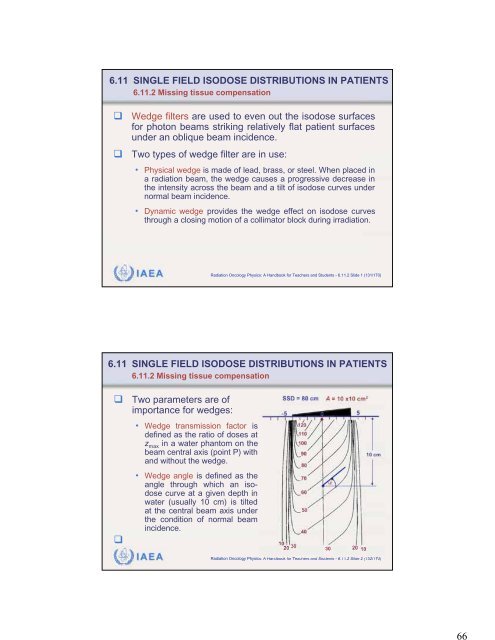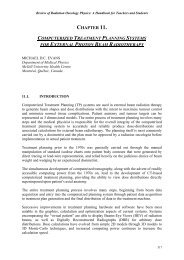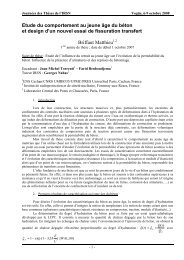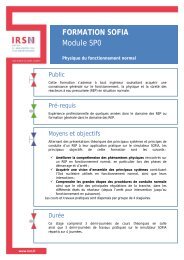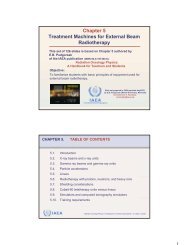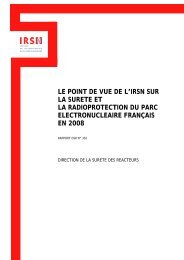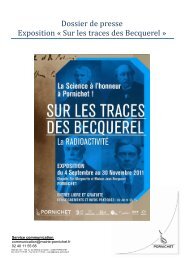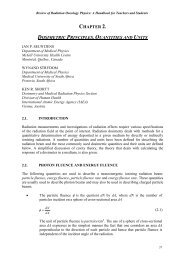Chapter 6 External Photon Beams: Physical Aspects - IRSN
Chapter 6 External Photon Beams: Physical Aspects - IRSN
Chapter 6 External Photon Beams: Physical Aspects - IRSN
You also want an ePaper? Increase the reach of your titles
YUMPU automatically turns print PDFs into web optimized ePapers that Google loves.
666.11 SINGLE FIELD ISODOSE DISTRIBUTIONS IN PATIENTS6.11.2 Missing tissue compensationWedge filters are used to even out the isodose surfacesfor photon beams striking relatively flat patient surfacesunder an oblique beam incidence.Two types of wedge filter are in use:• <strong>Physical</strong> wedge is made of lead, brass, or steel. When placed ina radiation beam, the wedge causes a progressive decrease inthe intensity across the beam and a tilt of isodose curves undernormal beam incidence.• Dynamic wedge provides the wedge effect on isodose curvesthrough a closing motion of a collimator block during irradiation.IAEA Radiation Oncology Physics: A Handbook for Teachers and Students - 6.11.2 Slide 1 (131/170)6.11 SINGLE FIELD ISODOSE DISTRIBUTIONS IN PATIENTS6.11.2 Missing tissue compensationTwo parameters are ofimportance for wedges:• Wedge transmission factor isdefined as the ratio of doses atz max in a water phantom on thebeam central axis (point P) withand without the wedge.• Wedge angle is defined as theangle through which an isodosecurve at a given depth inwater (usually 10 cm) is tiltedat the central beam axis underthe condition of normal beamincidence.IAEA Radiation Oncology Physics: A Handbook for Teachers and Students - 6.11.2 Slide 2 (132/170)


